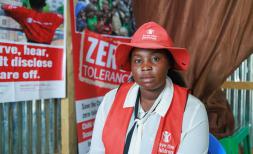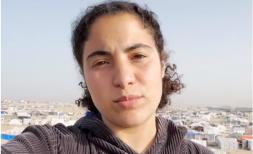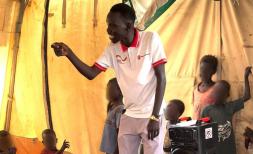Ensuring every last refugee child is in school and learning

A joint initiative by Pearson, UNHCR and Save the Children is looking to identify and promote promising practices in the field of refugee education.
Today more than 21 million people worldwide - half of them children – have been driven by war and persecution to seek protection in other countries.
Fleeing their homes almost 80% of the world’s refugees live in the world’s poorest countries, where they struggle to access basic services, including education for their children. More than half of the world’s school aged children are out of school and fewer than one in four refugee children of secondary school age have access to school.
For refugees who do have access to education, poor quality teaching, often by untrained volunteers, in classrooms which lack the most basic supplies means that their learning is compromised.
Refugee children and their families prioritise education
Despite this refugee children and their parents prioritise education often above everything else.
Formal learning provides children with the knowledge and skills they need to succeed, while giving them hope for the future. It also gives children who have experienced the trauma and horrors of war and disaster the stability and sense of familiarity they need to be children, while protecting them from the risks of exploitation, including trafficking, illegal adoption, child marriage, sexual exploitation and forced labour — both immediately after displacement and longer term.
But the demand of refugee children and parents for education isn’t being supported: less than two per cent of global humanitarian funding is currently provided to pay for learning during crises. There is no question that closing the education gap for refugee children around the world requires more and better funding along with policy changes aimed at ensuring children have immediate access to educational services after crossing an international border in search of protection.

Shining a light on promising practices
At the same time refugee communities often with the support of host communities and non-government organisations go to unprecedented lengths to ensure that refugee children can continue to access learning opportunities.
Which is why we’re working with UNHCR, the UN refugee agency and Pearson the world’s learning company to shine a light on innovations occurring in response to the challenges of educating refugees.
While lots of pioneering examples of refugee education exist, they are often not well known or understood outside of their context. Through the Promising Practices initiative we want to identify the projects with the most promise of contributing to wider change, document and promote them.
We’re not looking for silver bullets, but we do believe that there are policies and practices being implemented and which hold the potential to accelerate improvements in learning for refugees and we’re committed to finding them and sharing them widely.
Providing education to a new generation of refugees from Myanmar
One of the most compelling examples of the tenacity and commitment of refugees to provide education to their children are the schools that operate in the refugee camps on the Thai border. After more than 30 years, the situation for refugees from Myanmar in Thailand has become one of the world’s most protracted refugee crises.
Despite this, refugees in the nine camps along the border continue under extremely difficult conditions to run their own camp based education system. Save the Children is supporting their efforts. In response to an assessment of children’s reading ability – which showed poor reading attainment – we’ve been working in the camps to improve children’s early grade reading skills. For the first time ever, we took Literacy Boost, our pioneering approach to helping children learn to read, into an emergency situation.

Ensuring refugee children learn to read
Implementing Literacy Boost in the camps has involved producing and distributing local language reading material and training the camps’ volunteer teachers to teach reading more effectively. We’ve also been working with parents and children to encourage them to read more by implementing programmes such as ‘reading buddies’, which sees children team up, outside of school, to read to each other and discuss what they’ve been reading. We’ve seen reading skills improve, and a real enthusiasm for and commitment to reading, take off.
Thankfully there are other examples from other parts of the world which demonstrate the ensuring every last refugee child has access to quality learning opportunities is possible. We aim by sharing innovations like this to amplify the case for other innovations and improve the potential for replication of promising practices through increased awareness and improved understanding of their potential.
Submit your project
You can find out more about the Promising Practices in Refugee Education initiative and if you are implementing a project that you think might meet the selection criteria then please submit it.
Selected projects will be given technical support to develop case studies about their work along with a small grant of $1,000 USD in recognition of the costs associated with the documentation process. These case studies will then form part of a collection that showcases innovative practices from around the world. We will also be publishing a synthesis report that will be launched at UNGA 2017 and shared widely within the sector and policy makers.
Refugee children have the same right to access education as other children and need the skills and knowledge that education provides to help them adjust to their new circumstances, integrate into communities and ultimately to thrive. Identifying, documenting and sharing projects that have helped to deliver that can play a vital part in getting us closer to the goal of ensuring every last refugee child has enjoys their right to learn.








